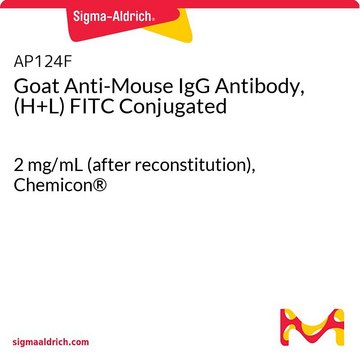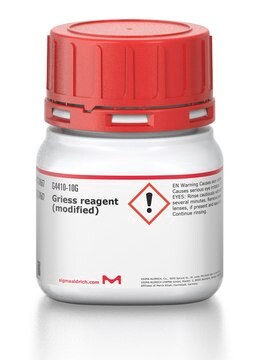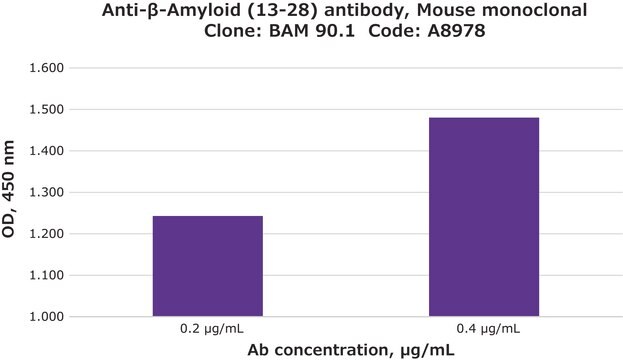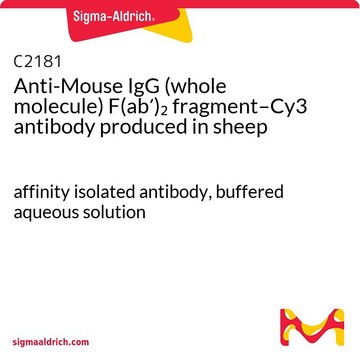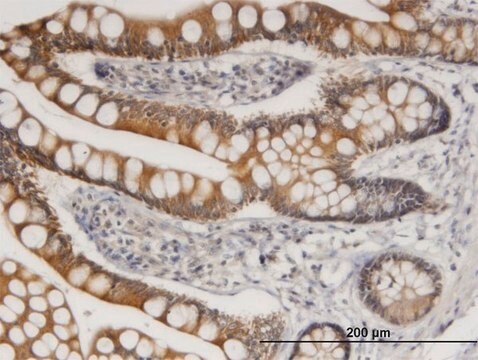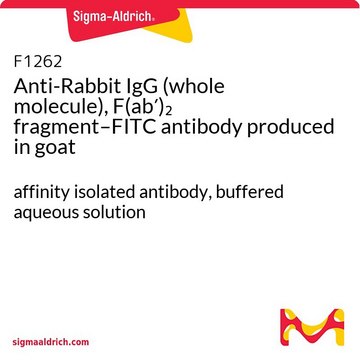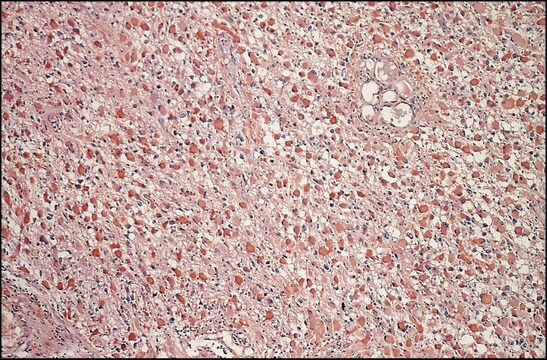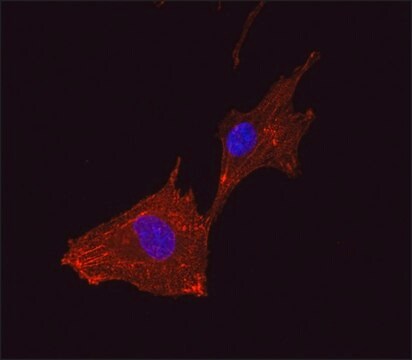General description
IgG antibodies are the smallest immunoglobulins found in all body fluids and can fight against bacterial and viral infections. It is the only type of antibody that can cross the placenta in pregnant woman and give immunity to the foetus. Anti-mouse IgG (whole molecule)-FITC antibody can be used as a secondary antibody in FACS analysis to detect cell surface expression of cd59b and cd59a in cloned CHO cells. Rabbit anti-mouse IgG (whole molecule)-FITC antibody reacts specifically with mouse IgG, IgA and IgM.
IgG antibody subtype is the most abundant serum immunoglobulins of the immune system. It is secreted by B cells and is found in blood and extracellular fluids and provides protection from infections caused by bacteria, fungi and viruses. Maternal IgG is transferred to fetus through the placenta that is vital for immune defence of the neonate against infections. Anti-Mouse IgG (whole molecule)-FITC antibody reacts with all mouse IgG subclasses and IgM. Purified rabbit anti-Mouse IgG is conjugated to FITC in an alkaline reaction.
Specificity
Specificity for mouse IgG is determined by immunoelectrophoresis (IEP) prior to conjugation using normal mouse serum and mouse IgG. Product reacts with mouse IgA and IgM.
Immunogen
IgG from pooled normal mouse serum
Application
Anti-Mouse IgG (whole molecule)-FITC antibody may be used for immunofluorescence at a working antibody dilution of 1:100 on human tonsil sections using mouse monoclonal anti-human IgG as primary antibody. For immunofluorescence of human peripheral blood lymphocytes, a minimum dilution of 1:100 is recommended. For immunohistochemistry applications, the working antibody dilutions range from 1:100 to 1:1000 in various studies.
Anti-mouse IgG (whole molecule)-FITC antibody (diluted 1:1000) can be used as secondary antibody in immunohistochemistry.
Anti-Mouse IgG (whole molecule)-FITC antibody has been used in immunofluorescence and cell proliferation assay.
Biochem/physiol Actions
Immunoglobulin G (IgG) mainly helps in immune defense. It participates in hypersensitivity type II and type III. It also helps in opsonization, complement fixation and antibody dependent cell mediated cytotoxicity.
Physical form
Solution in 0.01 M phosphate buffered saline, pH 7.4, containing 15 mM sodium azide.
Storage and Stability
Store at 2-8 °C for a maximum of one month. For extended storage, the solution may be frozen in working aliquots. Repeated freezing and thawing, or storage in "frost-free" freezers, is not recommended. If slight turbidity occurs upon prolonged storage, clarify the solution by centrifugation before use.
Disclaimer
Unless otherwise stated in our catalog or other company documentation accompanying the product(s), our products are intended for research use only and are not to be used for any other purpose, which includes but is not limited to, unauthorized commercial uses, in vitro diagnostic uses, ex vivo or in vivo therapeutic uses or any type of consumption or application to humans or animals.





